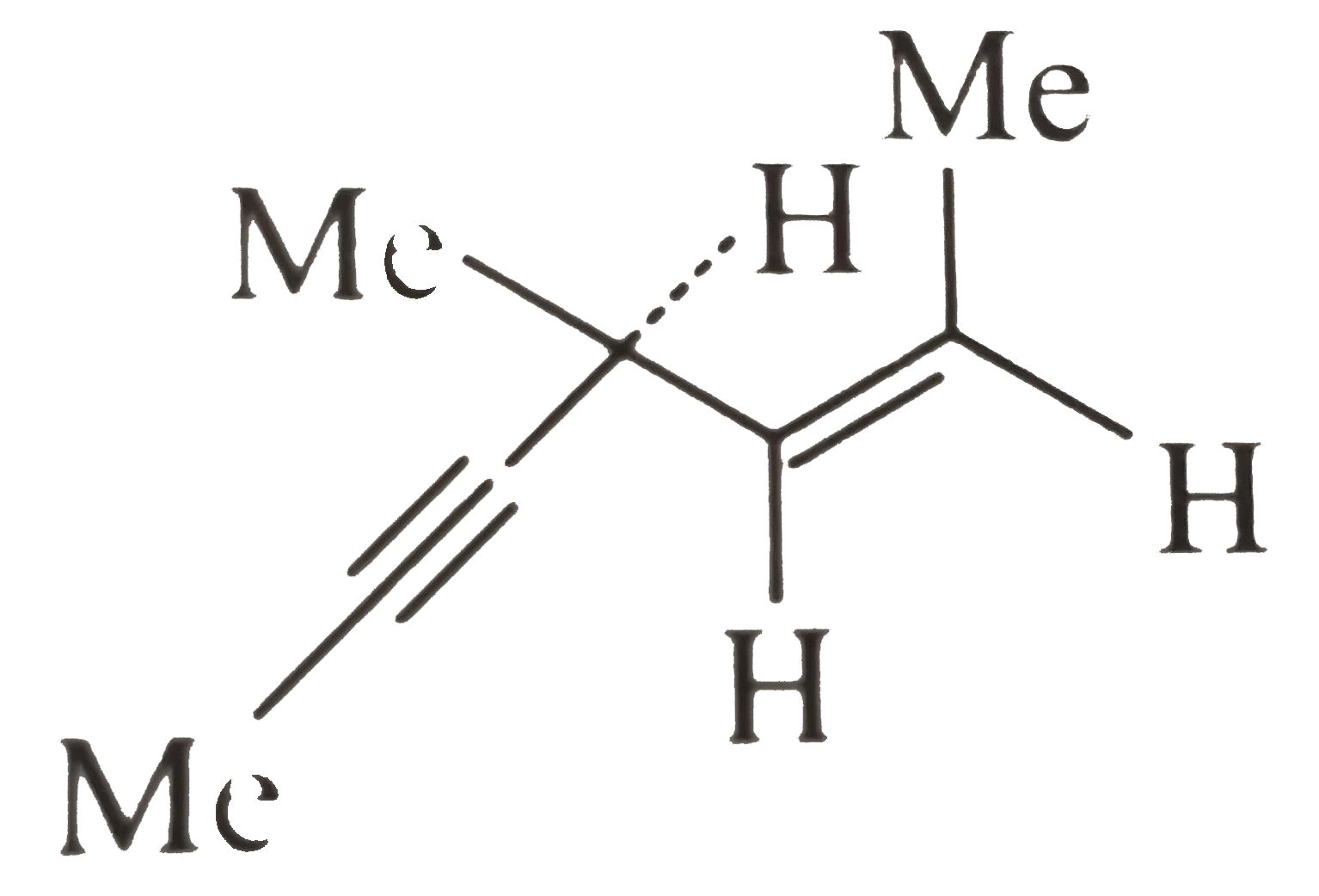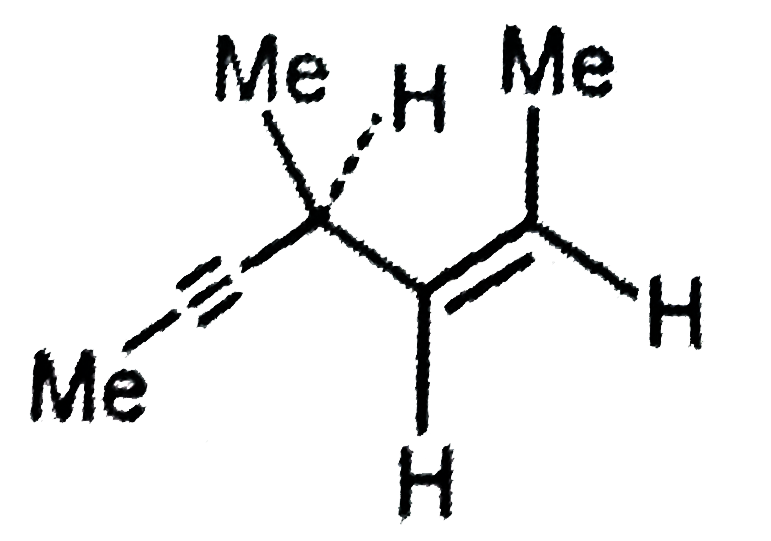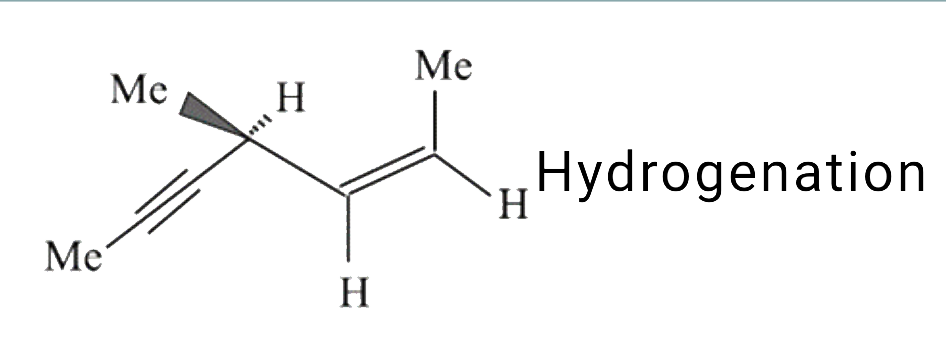
Hydrogenation of the above compound in the presence of poisoned Pd catalyst gives:
A
an optically active compound
B
an optically inactive compound
C
a racemic mixture
D
a diastereomeric mixture
Video Solution
Text Solution
The correct Answer is:B

By partial hydrogenation of (−C≡C−), an alkene is formed.
|
Topper's Solved these Questions
- ALKENES AND ALKADIENESBOOK - CENGAGE CHEMISTRY ENGLISHCHAPTER - ALKENES AND ALKADIENESEXERCISE - SUBJECTIVE TYPE
18 Videos
- ALKANES AND CYCLOALKANESBOOK - CENGAGE CHEMISTRY ENGLISHCHAPTER - ALKANES AND CYCLOALKANESEXERCISE - Archives
13 Videos
- ALKYNESBOOK - CENGAGE CHEMISTRY ENGLISHCHAPTER - ALKYNESEXERCISE - Exercises (Archives - Analytical and Desriptive Type)
4 Videos
Similar Questions
Knowledge Check

Dehydration of the above compound will give :Ameso productBracemic mixtureCdiastereomerDoptically pure enantiomerWhch hydrogen of above compound is most acidic?
 A1B2C3D4
A1B2C3D4Hydrogenation of benzoyl chloride in the presence of Pd on BaSO4 gives
ABenzyl alcoholBBenzaldehydeCBenzoic acidDPhenol.
Hydrogenation of the compound using D2/Pd gives :

View SolutionHydrogenation of benzoyl chloride in the presence of Pd on BaSO4 gives
View SolutionHydrogenation of benzoyl chloride in the presence of Pd/BaSO4 gives :
View SolutionHydrogenation of benzoyl chloride in the presence of Pd on BaSO4 gives
View SolutionHydrogenation of benzoyl chloride in the presence of Pd on BaSO4 gives
View Solution


 Hydrogenation of the above compound in the presence of sodium in liquid ammonia gives -
Hydrogenation of the above compound in the presence of sodium in liquid ammonia gives -